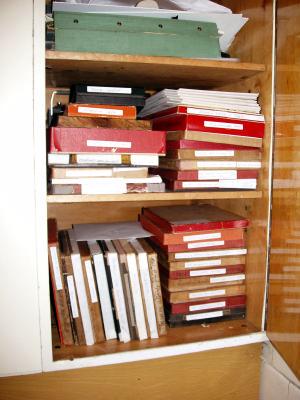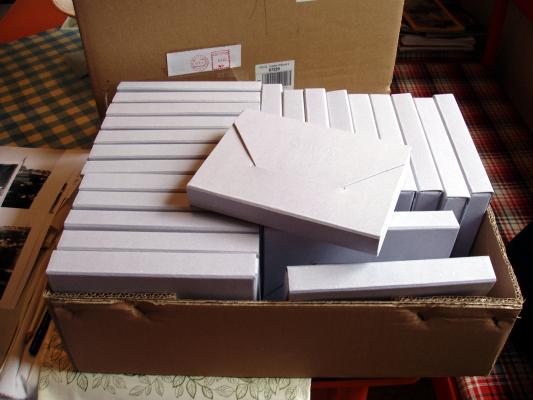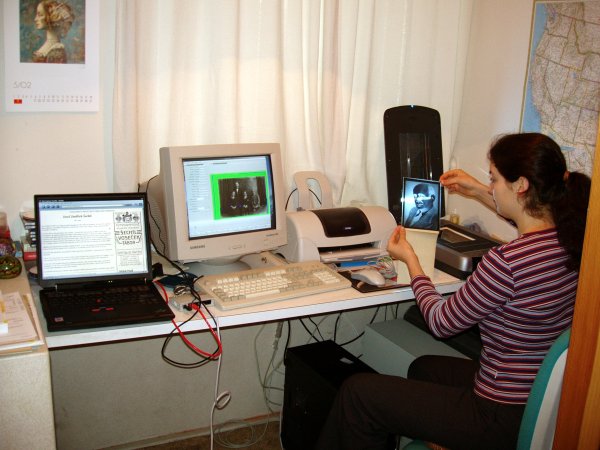Archive Digitization Project
The 100 years' activity of the Šechtl and Voseček Studio are preserved in a unique archive of approximately 9,000 glass negatives, 10,000 photos on 35mm film and tens of thousdands to hundreds of thousdands photographs on flat and sheet films. Our plan is to digitize all these negatives, and to make them accessible, both on the Internet (https://sechtl-vosecek.ucw.cz), and in the Museum. We hope to map the entire archive, and to identify and label all individual photos.
The original negatives are 13×18 cm, or 18×24 cm. The digitization is of high quality - 2400 points per inch - with 65,536 shades of grey. We use an Epson 4990 scanner which enables high-quality digitization of even damaged or deteriorated glass plate negatives. We also use Nikon coolscan 9000 for sheet films, Minolta DiMAGE 5400 for 35mm and Eversmart Supreme for flat films and large glass plates. we can even see the graininess and unevenness of the original emulsion. A typical negative becomes a digital picture of 600 to 900 megapixels, in JPEG2000 format, of approximately 300 megabytes, from which we make three copies.
Between April 2004 and December 2006, we processed approximately 8000 negatives, and stored 6 terabytes of data. Processing each negative takes about 20 minutes, so the scanning alone has so far taken 2,600 hours.
Between June 2005 and May 2007, we also processed 8432 35mm photographs by Josef Jindřich Šechtl dated to 1925-1951. First exhibition from this archive was held in 2007 in Šechtl and Voseček Museum of photography.
In December 2007 we started digitizing sheet films taken in 1950s to 1990s using specialised film scanner Nikon CoolScan 9000 ED.
In September 2011 we purchased Eversmart Supreme to digitize large glass plates and sheet films
We are grateful for the support of the Town, and the Regional Council, of Tabor.
 |
 |
|
Archive is currently located for instance even in
our sideboard
|
After scanning we put the negatives into new boxes
and photo-neutral envelopes
|
